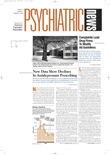Like so many young women, “Astrid” had looked forward with great excitement to her wedding day. But when the day finally arrived, she looked out the window and saw, to her horror, a black hearse parked in front of her house. A former boyfriend, “Otto,” she soon learned, had ordered the hearse to express his displeasure over her having rejected him in favor of another suitor.
Stalking is a serious problem for a number of women, and also for some men, in Germany, just as it is people in other countries, a new study reveals. This is apparently the first community study of stalkers to be conducted in Germany.
The lead investigator was Harald Dressing, M.D., of the Central Institute of Mental Health Mannheim in Mannheim, Germany. The results appeared in the August British Journal of Psychiatry.
Dressing and his colleagues surveyed some 700 residents of the city of Mannheim to identify individuals who had been stalked. Stalking was defined as multiple episodes of harassment that had to be present more than two weeks, involve more than one form of intrusive behavior, and provoke fear. Dressing and his coworkers asked the subjects who had been stalked to provide details surrounding their experience as well as the psychological impact on them.
Some 12 percent of those individuals surveyed reported that they had been stalked at some point in their lives. Eighty-seven percent were women. Some three-fourths had been stalked by someone they knew—say, a prior intimate partner. Eighty-six percent of the stalkers were male.
Victims reported that the most frequent motives of the stalkers appeared to have been a desire for a loving relationship, eagerness to resume a former relationship, jealousy, or revenge.
Stalkers used various means of harassment, victims revealed. The most frequent types included unwanted phone calls; loitering nearby; sending unwanted letters, e-mails, or faxes; following the victim; approaching the victim through a third party; and standing in front of the victim's door. Less common types of harassment included leaving messages at the victim's door, pursuing the victim by car, destroying property belonging to the victim, invading the victim's home, sending the victim unsolicited goods, and sending the victim offensive materials.
Almost a third of stalking victims reported having been physically assaulted by their stalker, and almost a fifth said they had experienced sexual assaults.
Victims also reported that they had experienced a number of psychological or somatic symptoms as a result of being stalked—agitation, anxiety, sleep disturbances, nausea, depression, headaches, and even panic attacks. Almost a fourth had visited a health professional to help them cope with these problems.
One of the most disturbing findings was that even when some variables connected with psychological health were taken into consideration, victims scored significantly lower on the WHO-5 Well-Being Index than had individuals who had never been stalked. This instrument is a brief scale for measuring positive psychological well-being. It consists of five items assessing positive mood, vitality, and general interest over the past two weeks. The instrument has also proven to be good for depression screening in the general population.
These results, Dressing and his coworkers wrote in their study report,“ closely resemble results found in population-based representative samples of the U.S.A., Australia, and England.” However, they added, their study is “the first to show that the lifetime prevalence of being a stalking victim is associated with current impaired psychological well-being.”
Br J Psychiatry 2005 187 168
